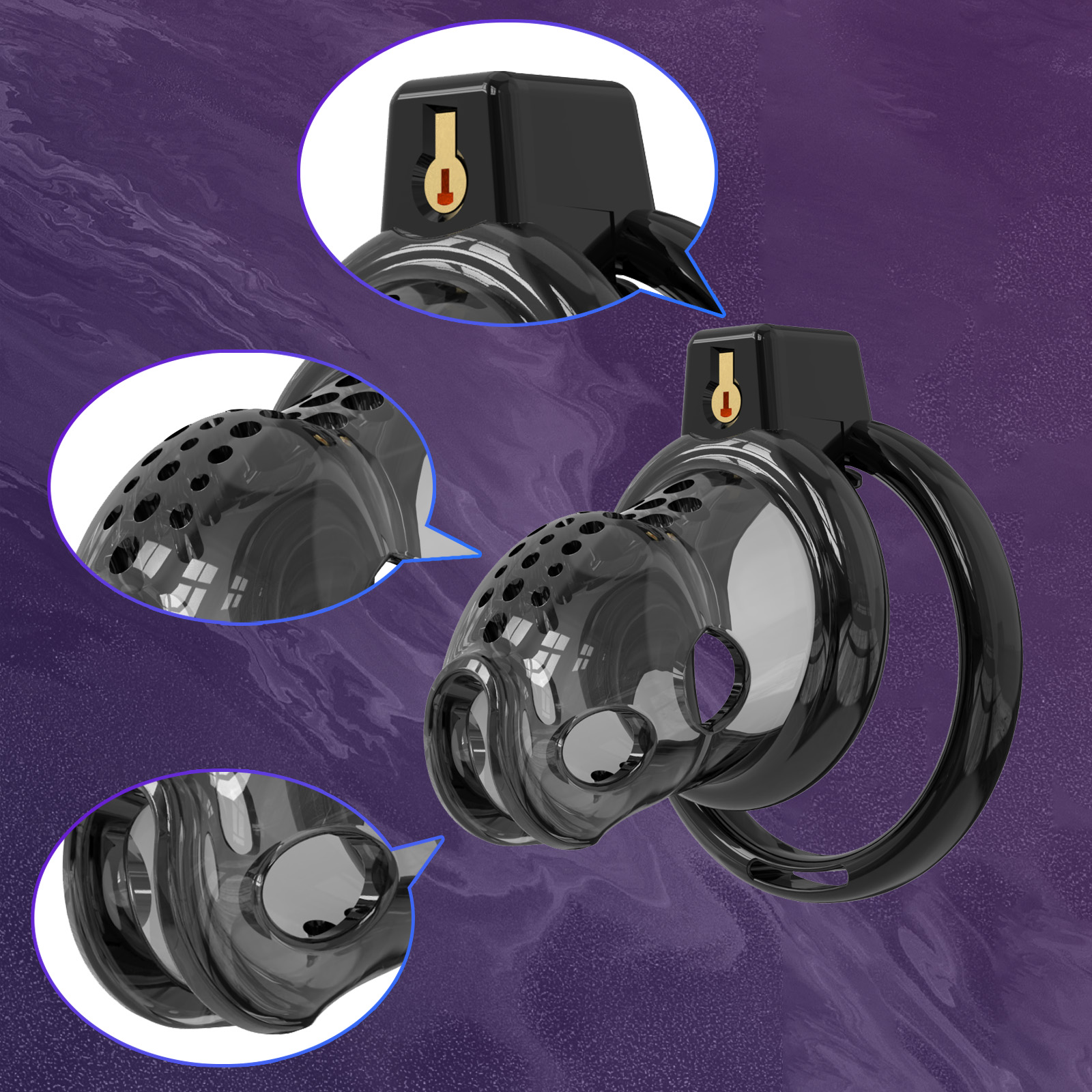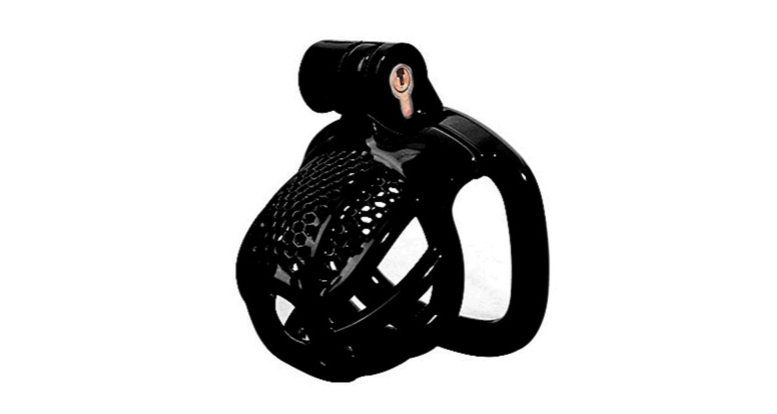Metal vs. Plastic Chastity Cages: Which Material is More Comfortable for Long-Term Wear?
2025-04-01
When choosing a chastity cage, comfort is key, especially for those who plan on wearing it for extended periods. While metal and plastic are common materials used in male chastity devices, each comes with unique benefits and drawbacks. This article will compare metal and plastic chastity cages, focusing on weight, breathability, skin sensitivity, and overall comfort for long-term wear. By the end, you'll clearly understand which material best suits your needs.
Weight and Durability: Metal Chastity Cage vs. Plastic Cages
Metal Chastity Cages: A Heavy-Duty Option
One of the defining characteristics of metal chastity cages is their weight. Metal cages are typically heavier than plastic ones, which may provide a more secure feeling for some individuals. The added weight of metal can also contribute to a greater sense of confinement, ideal for those seeking intense control and restriction. However, the weight can sometimes be a drawback for individuals who prefer a more subtle, lightweight experience.
Another essential advantage of metal is its durability. Steel, the most common metal used in chastity cages, is robust and resistant to wear and tear. This makes metal cages more secure than their plastic counterparts, as they are harder to tamper with or break. Steel also has a lower friction coefficient than plastic or resin cages, reducing the risk of discomfort or irritation due to chafing over time.
Plastic Chastity Cages: Lighter and More Flexible
On the other hand, plastic chastity cages are much lighter, which may be more comfortable for those who plan to wear their device for longer durations. The reduced weight can make the cage less noticeable, providing a more discreet experience. Plastic cages offer an appealing alternative for people not accustomed to wearing a chastity device or who want a less restrictive feel.
Plastic chastity cages, especially those made from medical-grade materials, are still highly durable but might not offer the same security and tamper resistance as metal cages. However, they are still an excellent option for individuals prioritizing comfort over heavy-duty security.
Breathability and Skin Sensitivity: Which Material is Best for Comfort?
Metal Chastity Cages: A Breathable Option with Limitations
While steel is known for being more hygienic due to its resistance to bacteria and its smooth surface, metal cages can sometimes feel warm or hot when worn for extended periods. This is especially true in warmer climates or individuals more prone to sweating. However, many modern metal chastity cages have strategic ventilation holes to improve airflow and reduce discomfort. These holes make the cage more breathable and allow for easier urination without removal.
Despite these features, metal cages can still lead to some skin irritation if not correctly fitted. The edges of poorly designed metal cages can rub against the skin, leading to chafing or soreness. For long-term wear, it's essential to ensure the cage is ergonomically designed and the user is comfortable with the fit.
Plastic Chastity Cages: Ideal for Breathability and Comfort
Plastic cages, particularly those designed with a hollow-out structure, tend to be more breathable than metal ones. These designs allow optimal airflow, keeping the skin cool and dry, which is especially important for long-term wear. Many plastic chastity devices, such as those offered by RupipiChastity, are designed with a breathable structure that minimizes the risk of discomfort or irritation.
Additionally, plastic is often gentler on the skin than metal. It's less likely to cause abrasions, making it a better option for sensitive skin users. Plastic's flexible nature allows for a more comfortable, customized fit, especially for users who may have difficulty with metal cages due to skin sensitivity.
The Ultimate Comfort: Advanced Designs in Both Materials
Metal Cages with Modern Innovations
While traditional metal cages may not be as comfortable for long-term wear, modern innovations have developed highly ergonomic designs that prioritize comfort. For example, some metal cages come with adjustable cuff rings, ensuring a snug yet non-restrictive fit. This flexibility reduces discomfort, making them more suitable for extended use. The smooth finish of many high-quality metal chastity cages also reduces the risk of chafing, providing a more comfortable experience for users.
Plastic Cages with 3D-Printed Lightweight Structures
On the other side, plastic chastity cages are becoming increasingly advanced with the incorporation of 3D printing technologies. These cages are lighter and more ergonomic, providing a superior fit that conforms to the body's natural shape. The use of 3D printing enables the creation of cages with intricate, hollow-out patterns that improve breathability and prevent irritation during prolonged wear.
The innovative designs of modern plastic chastity cages, like those seen in products from RupipiChastity, offer an optimal balance of security, comfort, and practicality. These cages often feature breathable patterns, convenient urination holes, and smooth, non-irritating surfaces, making them an excellent choice for long-term wear.
Security: Metal Cages Reign Supreme
Tamper-Proof and Secure: Metal Chastity Cages
Regarding security, metal chastity cages are often considered the gold standard. The robust and durable metal construction ensures that the device remains firmly in place once locked. Steel cages typically feature tamper-resistant secure locking mechanisms, offering peace of mind for individuals seeking absolute control. Metal chastity cages are the top choice for those who prioritize security and discipline.
Plastic Cages: Secure but Less Resistant
Although plastic chastity cages are also designed to be secure, they are generally less resistant to tampering than metal cages. Some plastic cages feature hidden locks and advanced locking systems to provide a high level of security, but they may not be as foolproof as their metal counterparts. Nonetheless, many people find plastic cages an excellent option for those who prioritize comfort without compromising too much on security.
Conclusion: Which is More Comfortable for Long-Term Wear?
Ultimately, choosing between a metal or plastic chastity cage depends on personal preferences and priorities. A metal chastity cage may be best if you want a secure, heavy-duty, durable option. Steel's smooth finish and lower friction coefficient offer better hygiene and comfort for those seeking a more intense, restrictive experience.
However, if comfort and breathability are your top priorities, especially for long-term wear, a plastic chastity cage may be the better option. Plastic's lightweight nature, modern ergonomic designs, and breathable features make it ideal for individuals with sensitive skin or those who want a more subtle, comfortable experience.
No matter which material you choose, plastic chastity cages have come with advanced functionality, ensuring that there's a perfect option for everyone seeking the ultimate chastity experience.









